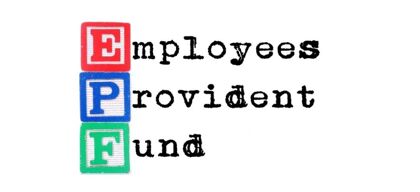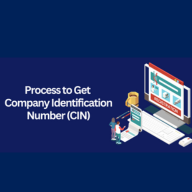Why is it mandatory for an employer to contribute to EPF?

Legal & Compliance
226 week ago — 6 min read
If you are an employee working for a corporate firm, then the Employee Provident Fund is something you will know about. The EPF is the main scheme organised by the Employees’ Provident Fund Organisation and governed by the Employees Provident Fund Provisions Act, 1952. Such a programme functions in every organisation that employs more than 20 people, and sometimes even less. So, why should we contribute to an EPF? Moreover, why should employers contribute to an EPF? Here’s a look at everything you need to know about EPFs and why they are essential.
What is the EPF?
As per the EPF scheme, every employee makes a minor contribution to the programme, and the employer makes an equal contribution. On retirement, the employee receives a lump sum which includes their personal contributions and the employer’s as well, along with interest accumulated. Hence, it works as a welfare scheme that helps employees prepare for a financially sound post-retirement period.
As per the EPF scheme, every employee makes a minor contribution to the programme, and the employer makes an equal contribution. On retirement, the employee receives a lump sum which includes their personal contributions and the employer’s as well, along with interest accumulated.
Who can contribute to the EPF Scheme?
As per the Employees Provident Fund and Miscellaneous Provisions Act, employees whose pay exceeds INR 15,000/month while joining is a non-eligible employee. Whereas employees whose starting salary is less than INR 15,000/month will become members of the EPF scheme. However, this does not mean that someone earning more than INR 15,000 cannot ever join the EPF. They may enter the program if they have special permission from the Assistant PF commissioner, and also if their employer agrees.
Why do Employers have to contribute?
As per the rules stated in the EPF Act, it is not just the employees who have to make contributions towards the scheme. The employer must put in a contribution that amounts to 12% of the salary (Salary= basic wages+dearness allowance+retaining allowance). Similarly, an equal contribution is given to the employee as well. In case the organisation employs less than 20 people, then both the employer and employee have to pay 10% of the salary.
However, in the private sector, the contribution is calculated based on the basic salary. For instance, if A receives INR 30,000/month, then employees must pay INR 3,600 (12% of 30,000), and the employer must also contribute the same every month. Also, the entire amount paid by the employer does not go to the EPF scheme. From the amount paid by them, 8.33% goes to the Employees’ Pension Scheme, but the contribution is calculated on INR 15,000. In case the employee makes less than INR 15,000/month, then 8.33% of their salary goes into the EPS, whatever remains goes to the EPF scheme. When the employee retires, they receive their share plus their employer’s share along with interest on both.
Can employees make higher contributions?
Employees can voluntarily choose to pay higher contributions if they want to. In case they feel they want to pay more than the required 12%, they may do so. In this process, the amount they pay goes into the Voluntary Provident Fund, which works separately. However, all the money that goes into this VPF account also earns tax-free interest. But in such cases, the employer does not have to contribute an equal amount to the VPF scheme. Therefore, at the time of retirement, the employee will get his or her share along with interest accumulated. This particular scheme does not have any financial input from the employer’s side.
When can we withdraw money from the EPF account?
As per the EPF Act, employees receive their EPF money when they retire from service, after the age of 55. The entire EPF account, which contains their contribution, the employer’s contribution, and the interest on both is emptied. However, people approaching retirement also have the option of partially withdrawing from their accounts. People above the age of 54, have the allowance to withdraw up to 90% of their balance. In case someone quits their job before the age of 55. They can withdraw the full amount if they stay unemployed for 60 straight days. In the past, a law forbade employees from accessing their EPF until they hit the age of 58.
However, this proposal is suspended as of now, allowing employees the chance to withdraw money from their EPF account. To withdraw money, employees have to utilise UAN-based Form 19. In such a facility, people may use UAN that can have to link UAN to their bank KYC details. While currently, employees must submit the form physically, it is expected that in the future, an online application will be set-up.
Also read
Employees Provident Fund: What it means & how employers can register for EPF
Everything an employer needs to know: PF, ESI, Bonus & Gratuity
To explore business opportunities, link with us by clicking on the 'Connect' button on our eBiz Card.
Image source: shutterstock.com
Disclaimer: The views and opinions expressed in this article are those of the author and do not necessarily reflect the views, official policy or position of GlobalLinker.
Posted by
Vakilsearch StaffGreetings! We would love to work with you and your company. We look forward to connecting with business houses and MSME's.

Employees Provident Fund: What it means & how employers can register for EPF

Vakilsearch Staff
Vakilsearch Staff at Vakilsearch
View Vakilsearch 's profile
SME Inspirations
Other articles written by Vakilsearch Staff
Know About the 4 Types of Partnership Firms
52 week ago
Most read this week
Trending
What is BRC in Export Business?
Export Sector 1 week ago
















Comments
Share this content
Please login or Register to join the discussion